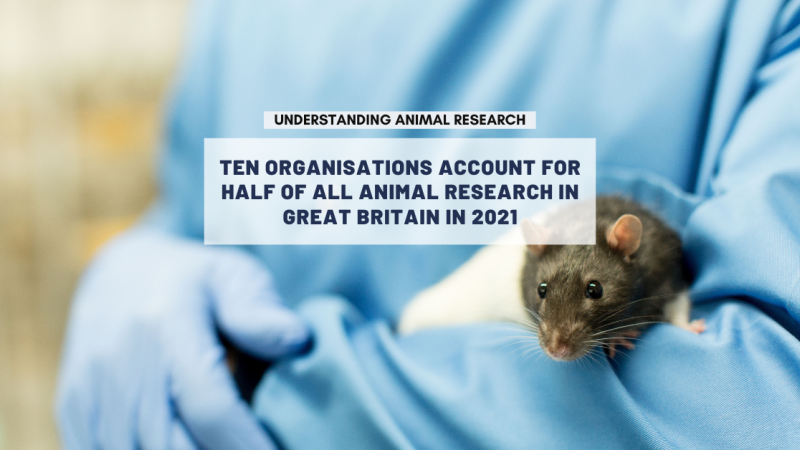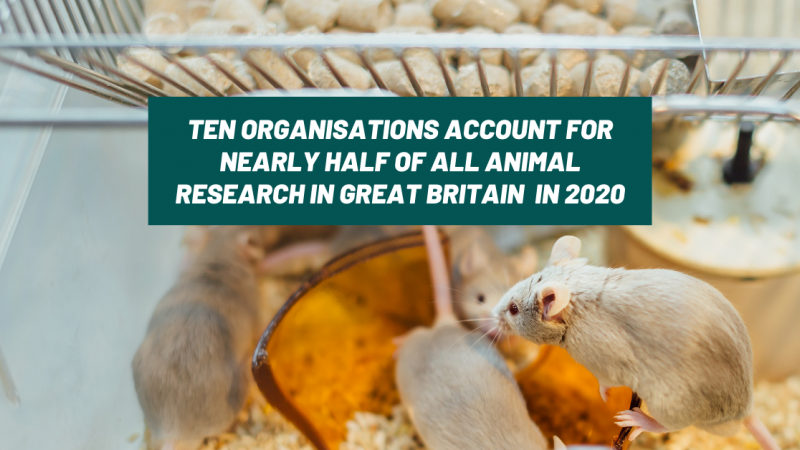Home Office publishes 2015 animal research figures
The Home Office has published the 2015 animal research statistics showing the number and types of procedures conducted in England, Scotland and Wales.
In 2015, Great Britain conducted 4,142,631 procedures, up 0.5% from 2013. The Home Office has explained that the 2014 figures (released last year) are likely to be understated due to it being the first year of a new system of counting animal procedures. For this reason, the comparisons below will be with 2013.
The Home Office wrote:
[T]hroughout this release, 2015 data are compared with 2013 data, as neither year of data are subject to the same data quality issues as the 2014 data. However, comparisons between 2015 and 2013 should still be exercised with a degree of caution due to the methodological change in 2014.
Of the 4.14 million procedures, 2.08 million were experimental procedures and 2.06 million were for the creation or maintenance of Genetically Altered (GA) animals not included in other procedures.

Mice, rats, fish and birds account for over 96% of all species used. Dogs, cats and primates accounted for 0.2% of all procedures. This rises to 0.4% when equids (such as horses) are included.
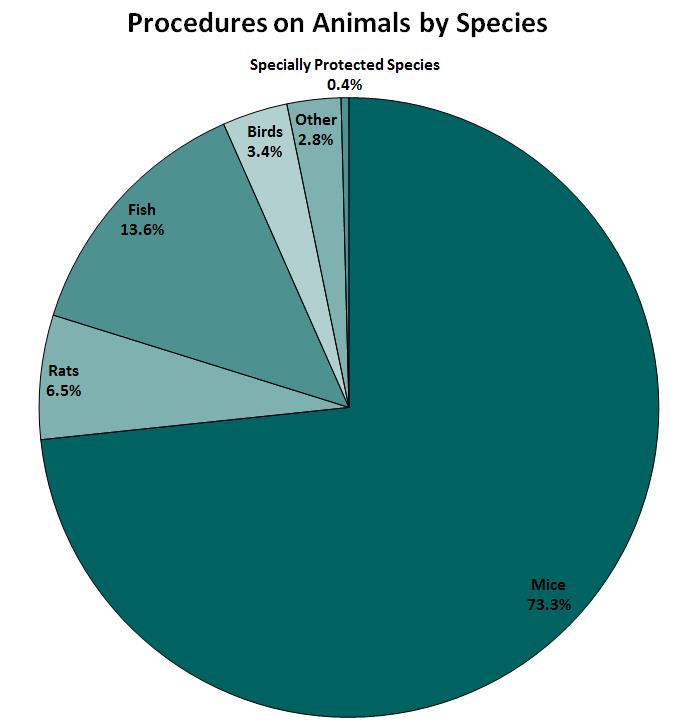
While half of the studies were the creation of genetically altered animals not used in experimental procedures (2.06 million), other common uses included Basic Research (1.10 million procedures), Regulatory tests (0.56 million procedures) and Translational and Applied studies (0.40 million procedures).
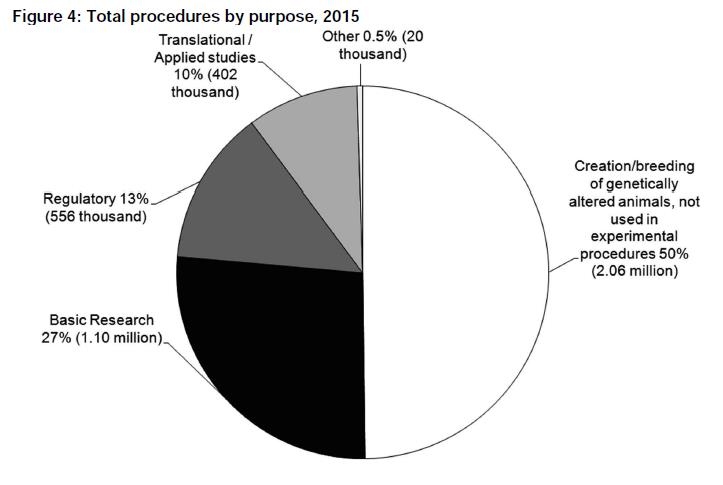
There has been a rise in the number of animal procedures over the past 10 years, however much of this is due to the rise in the creation and breeding of genetically altered animals – which now account for half of all procedures.
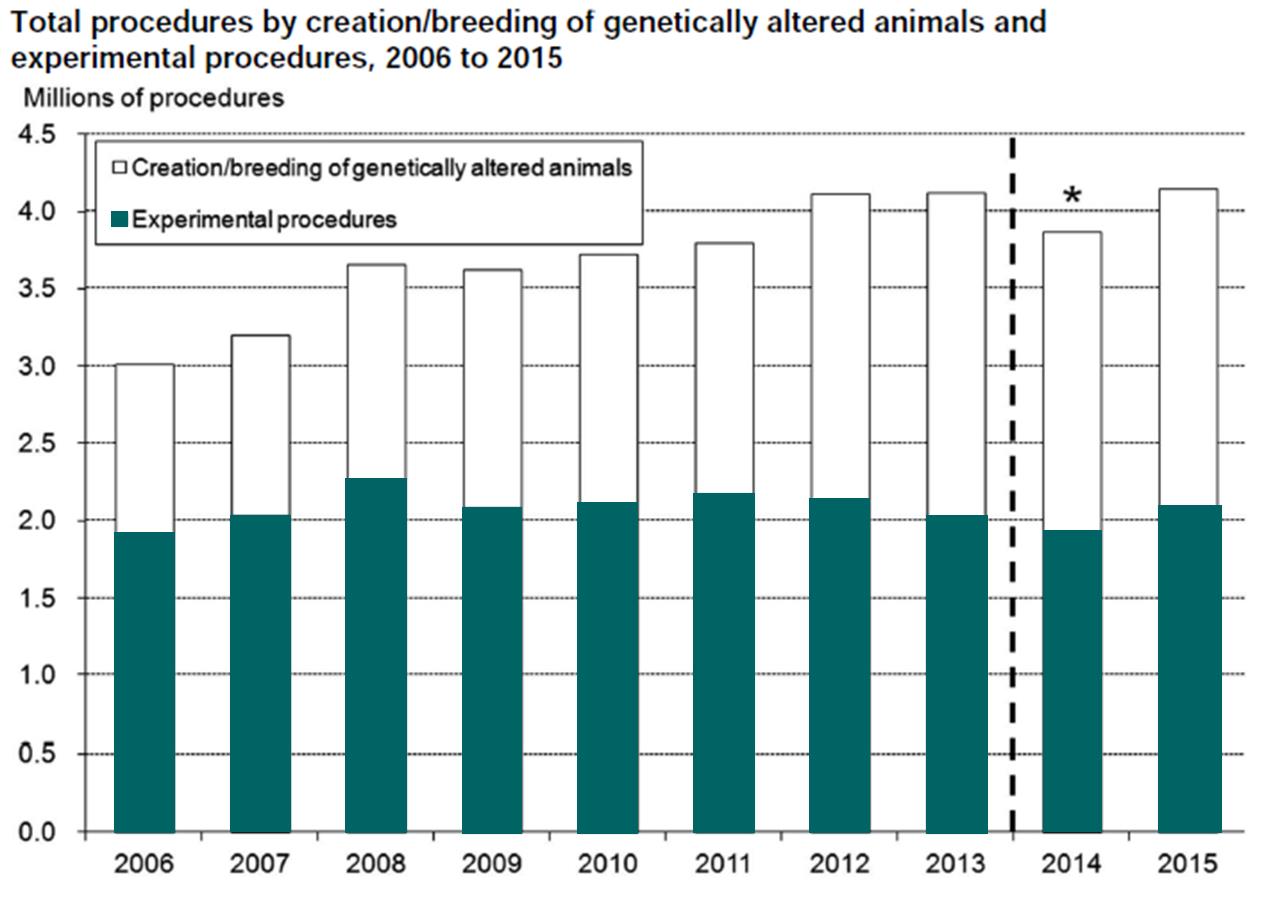 Looking at the severity assessments – a new requirement since 2014 – we can see that 6% of experimental procedures were considered severe (down from 8% in 2014) compared with 70% which were mild or below. For breeding of genetically altered animals, we can see that severe procedures accounted for 3% of studies, moderate accounted for 3% and 94% were mild or below.
Looking at the severity assessments – a new requirement since 2014 – we can see that 6% of experimental procedures were considered severe (down from 8% in 2014) compared with 70% which were mild or below. For breeding of genetically altered animals, we can see that severe procedures accounted for 3% of studies, moderate accounted for 3% and 94% were mild or below.
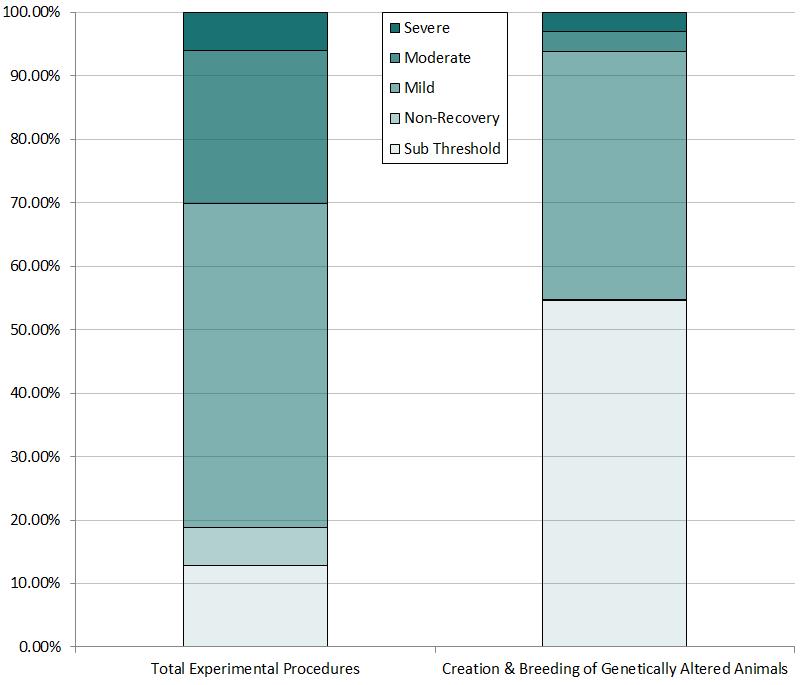
If we combine these charts we find the following:
- 3% - Non-recovery – Those where the entire procedure was carried out under general anaesthesia without recovery.
- 34% - Sub threshold – Those authorised under a project licence that did not actually cause suffering above the threshold of regulation (ASPA Section 2(1)), i.e. was less than the level of pain, suffering, distress or lasting harm that is caused by inserting a hypodermic needle according to good veterinary practice.
- 45% - Mild – Those where any pain or suffering experienced by an animal is, at worst, only slight or transitory and minor so that the animal returns to its normal state within a short period of time.
- 14% - Moderate - Those causing a significant and easily detectable disturbance to an animal’s normal state, but where it is not life-threatening. Most surgical procedures carried out under general anaesthesia and with good post-operative analgesia (i.e. pain relief) would be classed as moderate.
- 4.5% - Severe - Those causing a major departure from the animal’s usual state of health and well-being. It would usually include long-term disease processes where assistance with normal activities such as feeding and drinking are required or where significant deficits in behaviours/activities persist. It includes animals found dead unless an informed decision can be made that the animal did not suffer severely prior to death.
Wendy Jarrett, Chief Executive of Understanding Animal Research:
“The majority of the UK population can accept the use of animals in medical research as long as there is no unnecessary suffering. It is good to see, therefore, that the percentage of ‘severe’ experimental procedures has gone down and that the experience of 82% of animals bred for or used in research is ‘mild’ or below.
“The retrospective severity reporting that was introduced in 2014 is very welcome as we try to help the public to understand what actually happens to animals that are used in research. Signatories to the Concordat on Openness on Animal Research in the UK are already providing images, videos and written information about how they carry out, fund or support the use of animals in scientific research, and today’s statistics will help people to find out more about the reality of animal research in the 21st century.”
The full statistics and commentary from the UK Home Office can be seen here: https://www.gov.uk/government/statistics/statistics-of-scientific-procedures-on-living-animals-great-britain-2015
Last edited: 16 August 2022 09:59



